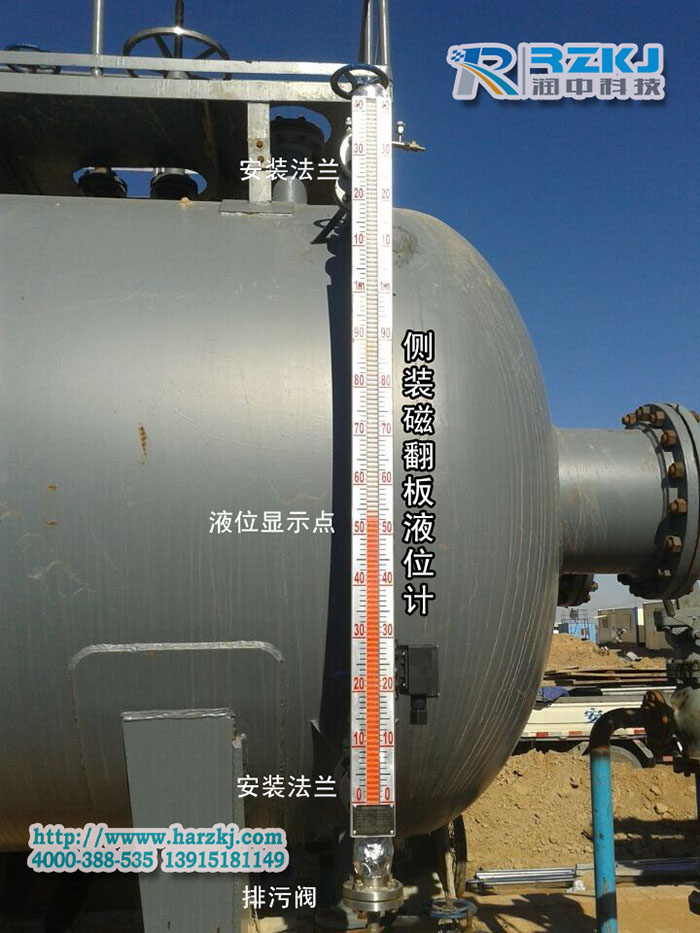In modern industrial production, various liquid raw materials and finished products are stored, transported and used, such as oil and various solvents of petrochemical enterprises, various slurries and pulps used in the production of pharmaceutical and papermaking enterprises, and various emulsions, beverages and juices produced and stored by food enterprises. All of them need to be stored safely and perfectly. Therefore, the measurement of the liquid level of these liquids is an important task in production. As an important basic data in industrial production, liquid level data is a basic requirement to ensure the normal and stable production of enterprises.
1. Types of liquid level gauges that measure by buoyancy
The buoyancy type of liquid level gauges all have a float (float or float), which is in a balanced state on the static liquid surface. When the liquid level changes, the float moves with the liquid surface. The electronic components obtain the displacement of the float in a certain way and then convert it into a change in the liquid level.
Due to the different ways in which electronic components receive the displacement of the float, the buoyancy type liquid level gauge is divided into magnetic flap liquid level gauge, float liquid level gauge, magnetostrictive liquid level gauge, etc.
1.1

Reference address:A brief analysis of how to classify common liquid level meters based on different measurement methods
1. Types of liquid level gauges that measure by buoyancy
The buoyancy type of liquid level gauges all have a float (float or float), which is in a balanced state on the static liquid surface. When the liquid level changes, the float moves with the liquid surface. The electronic components obtain the displacement of the float in a certain way and then convert it into a change in the liquid level.
Due to the different ways in which electronic components receive the displacement of the float, the buoyancy type liquid level gauge is divided into magnetic flap liquid level gauge, float liquid level gauge, magnetostrictive liquid level gauge, etc.
1.1

Previous article:How to correctly apply and maintain electromagnetic flowmeter scientifically
Next article:Discussion on the measurement methods and related selection considerations of industrial automation flow meters
- Popular Resources
- Popular amplifiers
Recommended Content
Latest Test Measurement Articles
- Keysight Technologies Helps Samsung Electronics Successfully Validate FiRa® 2.0 Safe Distance Measurement Test Case
- From probes to power supplies, Tektronix is leading the way in comprehensive innovation in power electronics testing
- Seizing the Opportunities in the Chinese Application Market: NI's Challenges and Answers
- Tektronix Launches Breakthrough Power Measurement Tools to Accelerate Innovation as Global Electrification Accelerates
- Not all oscilloscopes are created equal: Why ADCs and low noise floor matter
- Enable TekHSI high-speed interface function to accelerate the remote transmission of waveform data
- How to measure the quality of soft start thyristor
- How to use a multimeter to judge whether a soft starter is good or bad
- What are the advantages and disadvantages of non-contact temperature sensors?
MoreSelected Circuit Diagrams
MorePopular Articles
- Innolux's intelligent steer-by-wire solution makes cars smarter and safer
- 8051 MCU - Parity Check
- How to efficiently balance the sensitivity of tactile sensing interfaces
- What should I do if the servo motor shakes? What causes the servo motor to shake quickly?
- 【Brushless Motor】Analysis of three-phase BLDC motor and sharing of two popular development boards
- Midea Industrial Technology's subsidiaries Clou Electronics and Hekang New Energy jointly appeared at the Munich Battery Energy Storage Exhibition and Solar Energy Exhibition
- Guoxin Sichen | Application of ferroelectric memory PB85RS2MC in power battery management, with a capacity of 2M
- Analysis of common faults of frequency converter
- In a head-on competition with Qualcomm, what kind of cockpit products has Intel come up with?
- Dalian Rongke's all-vanadium liquid flow battery energy storage equipment industrialization project has entered the sprint stage before production
MoreDaily News
- Allegro MicroSystems Introduces Advanced Magnetic and Inductive Position Sensing Solutions at Electronica 2024
- Car key in the left hand, liveness detection radar in the right hand, UWB is imperative for cars!
- After a decade of rapid development, domestic CIS has entered the market
- Aegis Dagger Battery + Thor EM-i Super Hybrid, Geely New Energy has thrown out two "king bombs"
- A brief discussion on functional safety - fault, error, and failure
- In the smart car 2.0 cycle, these core industry chains are facing major opportunities!
- The United States and Japan are developing new batteries. CATL faces challenges? How should China's new energy battery industry respond?
- Murata launches high-precision 6-axis inertial sensor for automobiles
- Ford patents pre-charge alarm to help save costs and respond to emergencies
- New real-time microcontroller system from Texas Instruments enables smarter processing in automotive and industrial applications
Guess you like
- TI engineers share how to easily solve the overheating problem caused by overloading of power banks
- Some controversial PCB layout rules of thumb
- Help on using Darlington tube
- FPGA Implementation of Selected Area Capture of DVI Output Image
- IWR1642/AWR1642 GPADC Function Introduction and Implementation
- 【Smart Sports Watch】1. Unboxing
- 【GD32L233C-START Review】TFT screen display driver
- LOTO Oscilloscope Measurement - Light Intensity Sensor
- Free Review | Pingtouge Scenario-Based Bluetooth Mesh Gateway Development Kit
- Macropad with IPS screen

 AN OPTICAL METHOD FOR MEASURING BLOOD GLUCOSE NON INVASIVELY
AN OPTICAL METHOD FOR MEASURING BLOOD GLUCOSE NON INVASIVELY















 京公网安备 11010802033920号
京公网安备 11010802033920号